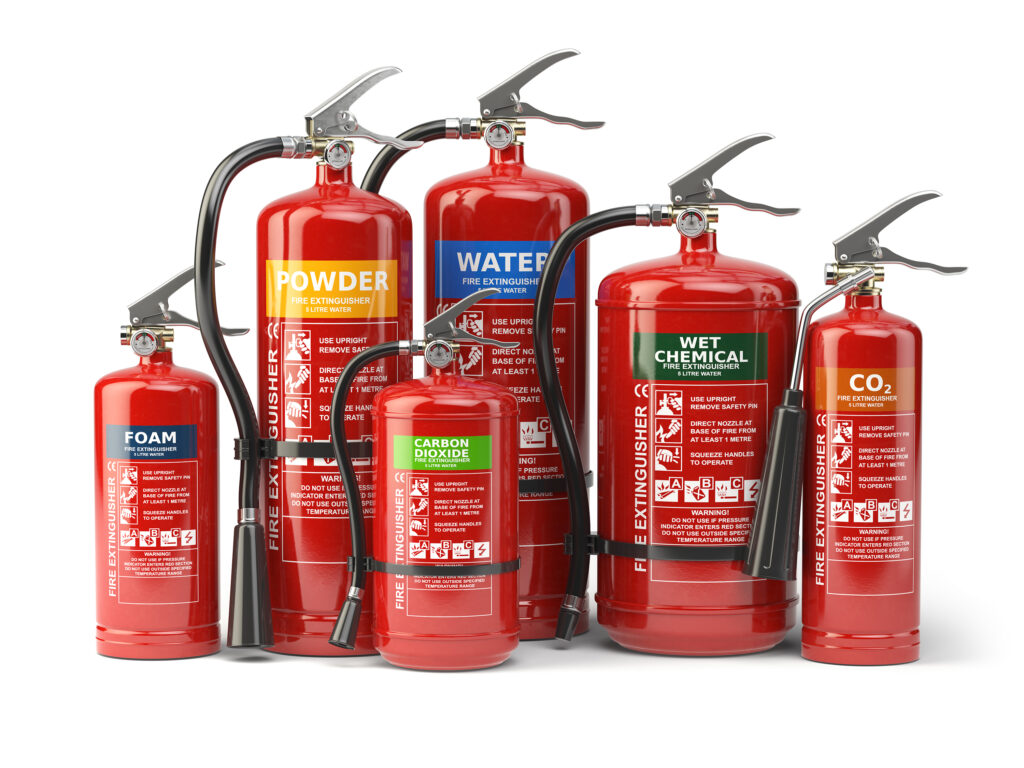Commercial buildings with fire extinguishers can reduce property damage and save lives. According to municipal and federal rules, building managers and owners should provide portable fire extinguishers for their buildings.
If you’re not sure what kind and quantity of fire extinguishers your building need, there are a few important things to think about. Water, for example, works wonders at extinguishing many fires, but it is insufficient and can even exacerbate electrical fires.
For the safety of persons and property, selecting the appropriate fire extinguishers is crucial to fire and life safety.
Fire Extinguisher Classes
To make sure you adhere to the most recent fire safety codes, you should collaborate with a reputable fire protection business. It is crucial to understand the fire dangers associated with your building and the kind of extinguishers you should keep on hand.
Based on the types of fires they are intended to put out, portable fire extinguishers are divided into five categories:
Class A Fire Extinguishers
Fire extinguishers classified as class A are meant to put out combustible flames that are started by ordinary materials such as paper, rubber, cloth, wood, and some plastics. They employ water mist or a clean agent, depending on the materials, to put out and cool fires.
Class B Fire Extinguishers
Liquids that are combustible and flammable, such as grease, alcohol, oil, and lacquers, can cause Class B fires. Carbon dioxide, a clean chemical that smothers and extinguishes the flames without leaving a residue, is used by Class B fire extinguishers to properly suppress these fires.
Class C Fire Extinguishers
Electrical equipment that is energized is classified as class C fire resistant. Class C fire extinguishers employ carbon dioxide or similar clean substance to put out fires, just like Class B devices do.
Class D Fire Extinguishers
When a fire occurs with flammable metals such as magnesium, sodium, or titanium, class D fire extinguishers are needed. Since other agents may react with the fire and cause it to spread, Class D fire extinguishers employ a dry powder ingredient to suppress flames and absorb heat.
Class K Fire Extinguishers
Cooking appliances that use vegetable or animal fats and oils are the source of class K fires. A wet chemical agent based on potassium is used by class K fire extinguishers to simultaneously put out and cool kitchen fires.
Multipurpose Fire Extinguishers
For Class A, B, and C fires, multipurpose dry chemical or ABC fire extinguishers are safe. They employ a unique chemical to put out fires and are electrically nonconductive.
Choosing the Right Type of Fire Extinguisher for Your Industry
Every building owner and manager should install portable fire extinguishers for staff to use on non-growing fires contained to a limited area or where smoke hasn’t filled the space, according to the National Fire Protection Association’s recommendations.
When selecting appropriate models for your business, speaking with a fire and life safety specialist can be beneficial because there are numerous sorts of fires and fire extinguishers.
- Multifamily residential buildings typically require multipurpose extinguishers to cover the various types of fires that could break out. A fire protection company can ensure your apartment or condominium complex is stocked according to all applicable codes.
- Office buildings must meet a long list of NFPA codes. The three most common fire extinguishers in offices are water, foam, and carbon dioxide.
- Hotels and hospitality structures typically have a combination of every fire extinguisher classification, as they usually house electrical equipment, flammable liquids, combustible materials, commercial cooking equipment, and ordinary combustibles like wood and fabric.
- Restaurants always require Class K fire extinguishers so kitchen staff can quickly take action against small fires. ABC fire extinguishers throughout the rest of the restaurant ensure staff and guest safety.
- Retail stores typically require Class A fire extinguishers, though some may also need Class B equipment for flammable liquids fires.
- Automotive and industrial facilities can benefit from multipurpose dry chemical fire extinguishers that put out fires by interrupting chemical reactions.
- Educational, religious, and recreational spaces generally install ABC or multipurpose fire extinguishers. Most also purchase Class K extinguishers for kitchen and cafeteria fires involving cooking liquids like oils and fats.
- Healthcare and assisted living facilities require Class A, B, and C fire extinguishers, either separately or with multipurpose models. Buildings with kitchens should also install Class K extinguishers.
The Importance of Fire Extinguisher Maintenance in Commercial Buildings
To function properly in a fire emergency, commercial fire extinguishers must be maintained and recharged. The experts at Best Fire Alarms will visit your building or business on a regular basis for maintenance in order to:
- Ensure fire extinguishers are easily accessible in appropriate locations.
- Identify and repair any extinguisher problems.
- Check for proper sealing and legible tags.
- Recharge equipment as needed.
- Let you know when it s time to replace your extinguishers.
Call Best Fire Alarms at (916) 663-3582 or send us an online message to find out more about the various business fire extinguisher categories and all the fire safety services we provide, including emergency repairs.



